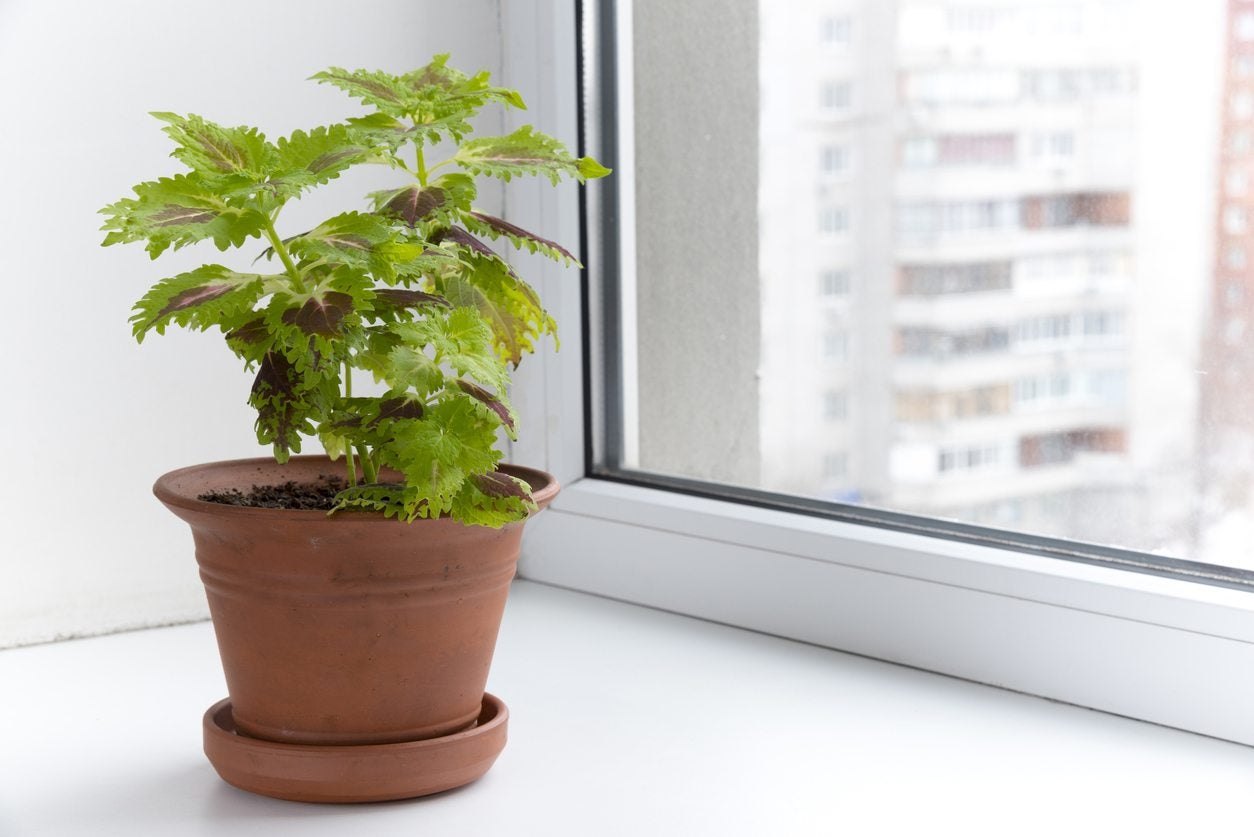Indoor Coleus Care: How To Grow A Coleus Houseplant


Can I grow coleus indoors? Sure, why not? Although coleus is typically grown outdoors as an annual, its vibrant leaves provide many months of enjoyment indoors if growing conditions are just right. In fact, coleus plants respond well to potted environments. Read on to learn more about growing coleus as an indoor plant.
How to Grow a Coleus Houseplant
Growing coleus plants indoors isn’t at all difficult but does require a few basic needs when it comes to light and temperature. Coleus likes bright light, but be careful of intense sunlight. Look for a spot where the plant gets bright, morning sunlight but indirect light during the afternoon. You may need to supplement available light with artificial lights during the winter. Watch the plant closely. If the leaves fade and lose color, the plant is probably getting too much sunlight. However, if the plant is lackluster and drops its leaves, try giving it a little more light. Coleus as an indoor plant performs best in temperatures between 60 and 75 F. (16-24 C). Winter temperatures should be cooler, but don’t expose the plant to temperatures below 50 F. (10 C). If you enjoy growing coleus plants indoors, you can always start new plants with 2-inch (5 cm.) cuttings taken from a healthy, mature plant. Plant cuttings in moist potting soil, then keep them moist and warm until the new plants are established. At this point, resume normal care.
Indoor Coleus Care
Once you begin growing coleus as an indoor plant, its continued care is important in keeping the plant healthy. Here are some tips to help with that:
- Water regularly to keep the soil slightly moist – never bone dry and never soggy.
- Feed the plant once every week or two during spring and summer, using a water-soluble fertilizer diluted to half-strength.
- Place the pot on a tray with a layer of wet pebbles if the air in your home is dry. (Never let the bottom of the pot stand directly in water.)
- Pinch the tips of the plant frequently to keep it bushy. Feel free to remove up to one-third of growth if the plant becomes long and leggy.
- Remove blooms as soon as they appear, as they draw energy from the colorful foliage. If you allow blooming to continue, the plant will go to seed and die.
- If the plant gets too scraggly, it may be time to start fresh with a new plant.
Sign up for the Gardening Know How newsletter today and receive a free copy of our e-book "How to Grow Delicious Tomatoes".

A Credentialed Garden Writer, Mary H. Dyer was with Gardening Know How in the very beginning, publishing articles as early as 2007.